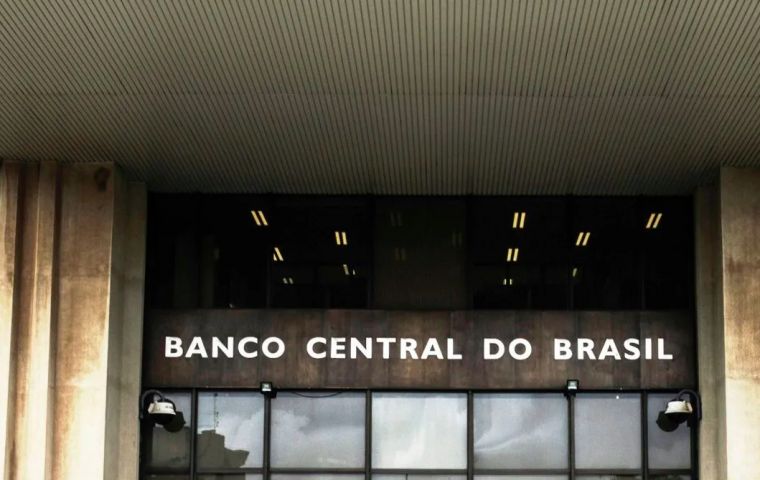MercoPress. South Atlantic News Agency
Brazil's Real among the worst performing currencies this year, shrinks 8%
 Brazil’s central bank last week cut its benchmark Selic rate to a new low of 4.25% and signaled that its easing cycle was now over
Brazil’s central bank last week cut its benchmark Selic rate to a new low of 4.25% and signaled that its easing cycle was now over Brazil’s currency fell below 4.35 reais per dollar for the first time this week, as weaker-than-expected retail sales figures gave renewed impetus to the selling that has picked up notable momentum in recent days.
The latest slide marked the fourth day in a row the real has made a new low against the dollar and brought its losses since Jan. 1 to almost 8%, making it one of the worst-performing currencies in the world against the greenback.
Figures on Wednesday showed that Brazilian retail sales unexpectedly fell in December, the first decline in eight months and another sign that the wider economic recovery may be weaker than many had hoped.
“The (retail sales data) release extends the slew of disappointing data undermining the growth narrative in Brazil and BRL longs,” Citi’s emerging market strategy team led by Dirk Willer wrote in a client note on Wednesday.
“We stay on the sidelines in the BRL until more positive data firmly close to door to further (policy) easing.”
Brazil’s central bank last week cut its benchmark Selic rate to a new low of 4.25% and signaled that its easing cycle was now over. But any support the real might have got from the unwinding of further easing bets in rates markets has not materialized.
Quite the opposite. An increase in speculative selling and hedging demand for dollars from domestic investors amid a stark lack of demand from overseas investors has pushed it sharply lower ever since.
Traders say the absence of central bank intervention has helped encourage the selling, although they say the central bank is justified in not acting, given that move is fairly steady, volatility remains largely contained, and inflation expectations have not been affected yet.
Still, it might require action to reverse the move, as the real’s momentum is firmly downward. “It’s too early to say that the real’s depreciation is due to risk deterioration, but I don’t like this move,” said one trader in Sao Paulo. “The real is still subject to further depreciation, at least if the central bank doesn’t show up.”




Top Comments
Disclaimer & comment rulesCommenting for this story is now closed.
If you have a Facebook account, become a fan and comment on our Facebook Page!